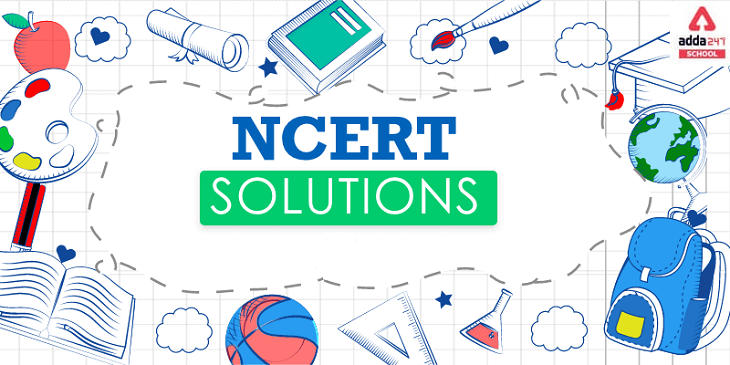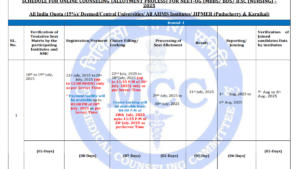NCERT Solutions for Class 7 Science Pdf Download
Students studying the 7th standard are introduced to various concepts of Physics, Chemistry and Biology by prescribed science textbooks. Sometimes it becomes difficult for a student of class 7 to understand the new concepts, making it difficult to answer the textbook questions. NCERT Solutions for class 7 deals with chapters that are important which will act as a base for higher class science subjects. The answers are written very carefully so that no confusion is created in the minds of class 7 students since the topics in the textbook are very new.
The NCERT Solutions covers the full CBSE schedule as well as enough to cover the nuts and bolts and essentials of the multitude of themes needed in cutthroat tests like JEE and NEET.
Read Ncert Solution for Class 12
Ncert Solutions for Class 7 Science Chapter-wise
Class 7 Chapter 1 Nutrition in plants
This chapter discusses all the important phenomena like the mode of nutrition in plants, photosynthesis and how nutrition reaches the soil. In Chapter 1, you will be introduced to heterotrophic and autotrophic organisms. You will learn to differentiate between these two types of living organisms.
To understand how photosynthesis takes place and what are the key parts of a plant that facilitate the process of photosynthesis, go through the NCERT Solutions for Class 7 Science for textbook questions.
Class 7 Chapter 2 Nutrition in Animals
The chapter gives an idea about the nature of animal food. This chapter deals with nutrition in herbivores and carnivores. It explains the importance of food in the growth, repair, and functioning of the animal body. The chapter deals with several interesting topics such as ways of taking food, the process of digestion in humans, and grass-eating animals.
Class 7 Chapter 3 Fibre to Fabric
The third chapter tells us how people get silk and wool for clothing. It describes the entire journey of the making of silk, the silk moth (its birth, cocoon etc.) and the processing of silk. A similar journey is discussed for wool and how it is obtained from sheep.
Class 7 Chapter 4 Heat
The main topics that will be covered in this chapter are heat, how it transfers from one object to another, and what are the good conductors of heat, what are the bad conductors of heat, and insulator. You will also learn how to measure the temperature, about different types of thermometers.
Class 7 Chapter 5 Acids, Bases and Salts
Neutralization is a reaction between an acid and an alkali that forms salt and water. Salts are odourless and have a salty taste, and many are soluble in water. In this chapter, students will learn about the basic definition of acids and bases, types of natural indicators around us, the process of neutralization, and examples of neutralization in daily life.
Class 7 Chapter 6 Physical and Chemical changes
There are mainly two types of changes that occur namely physical and chemical. A change in which a substance goes under the change in physical properties called a physical change. A change in which one or more new substances are formed is called a chemical change.
Class 7 Chapter 7 Weather, Climate and Adaptations of Animals to climate
This chapter discusses climate in-depth and how it affects the living beings surviving under those climatic conditions. It focuses on different climatic conditions like cold, rains etc.
Class 7 Chapter 8 Winds, storms and cyclones
Storms and Cyclones are the forms of natural calamities faced by most of the nations. These storms and cyclones cause a lot of destruction with loss of life and wealth. The climatic changes leading to storms and cyclones are studied and with the advancement in technology, we can also predict such calamities and take precautionary measures to minimize the losses.
Class 7 Chapter 9 Soil
The chapter covers about the importance of different types of soil. In this chapter, you will find that soil is one of the most important geological features on Earth. It is the foundation for many things. From soil types and properties, moisture in soil and absorption of water by soil to soil and crops
Class 7 Chapter 10 Respiration in Organisms
All the living organisms need energy even when they are sleeping or dormant. The food that we have stored contains some energy. This energy is released during respiration. The process of breakdown of food in the cell with the release of energy is called cellular respiration. Cellular respiration takes place in the cells of all organisms. There are some organisms like yeast that can live in the absence of air. Yeast breaks down the food and releases energy in the absence of oxygen. This process is called anaerobic respiration.
Class 7 Chapter 11 Transportation in Plants and Animals
The chapter covers transportation in animals and plants, where you will learn about the circulation system(blood, blood vessel, and heart, heartbeat), excretory system(kidney, urinary bladder, ureters), and transportation of substance in plants. You will also study how hemoglobin binds with oxygen and transports it to all the parts of the body and ultimately to all the cells, and how blood(white blood cells (WBC)) fight against germs that may enter our body.
Class 7 Chapter 12 Reproduction in Plants
The production of new individuals from their parents is known as reproduction. There are two different modes of reproduction in plants namely asexual and sexual. There are several methods of asexual reproduction such as fragmentation, budding, spore formation, and vegetative propagation. Sexual reproduction involves the fusion of male and female gametes.
Class 7 Chapter 13 Motion and Time
The chapter covers the motions and time of the motions as the names suggest. The speed of an object is the distance traveled divided by the time taken to cover that distance. Its basic unit is meter per second (m/s) and the motion of objects can be presented in pictorial form by their distance-time graphs.
Class 7 Chapter 14 Electric current and its effects
Electric and its Effects, students will know that when an electric current flows through a wire, the wire gets heated. It is the heating effect of current and this effect has many applications. They will also get to know that wires made from some special materials melt quickly and break when large electric currents are passed through them.
Class 7 Chapter 15 Light
In this chapter, you will study light and it’s properties, a reflection of light, and different types of mirrors, the image in the mirror, lenses, images formed by lenses, properties of sunlight, prism, etc. There are two types of mirror concave mirrors, and a convex mirror.
Class 7 Chapter 16 Water: A precious resource
In this chapter, students will learn the importance of water. They will be informed about the three forms of water and how there is an uneven distribution of water resulted from human activities. The acute scarcity of water in many parts of the globe will also be brought to notice.
Class 7 Chapter 17 Forests: Our lifeline
Forest comprises various plants, animals and micro-organisms. In a forest, trees form the uppermost layer, followed by shrubs. Herbs form the lowest layer of vegetation. Different layers of vegetation provide food and shelter for animals, birds, and insects. The various components of the forest are interdependent on one another.
Class 7 Chapter 18 Wastewater story
The chapter covers how the wastewater is treated to reduce the pollutants to a level. Where underground sewerage systems and refuse disposal systems are not available, low-cost on-site sanitation system can be adopted. By-products of wastewater treatment are sludge and biogas. An open-drain system is a breeding place for flies, mosquitoes, and organisms which cause diseases.
Adda 247 provides easy, understandable solutions of all the questions from class 6th to 12th in both English as well as Hindi. Hindi is also kept into account as it is the medium of study in some schools. The solutions clear up the concepts of the students.









 NEET UG 2025 Counselling Dates OUT! Chec...
NEET UG 2025 Counselling Dates OUT! Chec...
 Dr MGR Medical University Results 2025 R...
Dr MGR Medical University Results 2025 R...
 GSEB HSC Science Supply Result 2025 Down...
GSEB HSC Science Supply Result 2025 Down...









